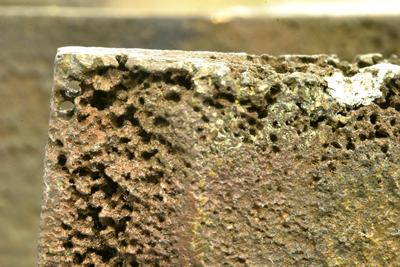Tribocorrosion is the combine effect of corrosion and wear. This can lead to acceleration of the removal rates as the two processes synergistic combine, examples of this is observed when passive metals, that rely on thin protective oxides, are damaged during wear which exposes the underlying and reactive metal to the corrosive environment. Another example is when corrosive attack grain boundaries in metals or binder alloys in hard-metals weakening that wear is easier as the integrity is compromised at the surface.

Studying tribocorrosion is performed on tribological equipment but requires special consideration of the test equipment and the sample. This generally means that the equipment itself needs to be corrosion resistant so that corrosion products from the rig don’t enter the test solution and that it still performs at it should. Another thing to avoid is coupling the sample to another metal (unless this is intentional) as this produces a bimetallic corrosion situation where one metal will be anodic and one cathodic changing the system dramatically by either protecting the test sample or accelerating corrosion.
nCATS has a long history of adapting rigs for tribocorrosion experiments.